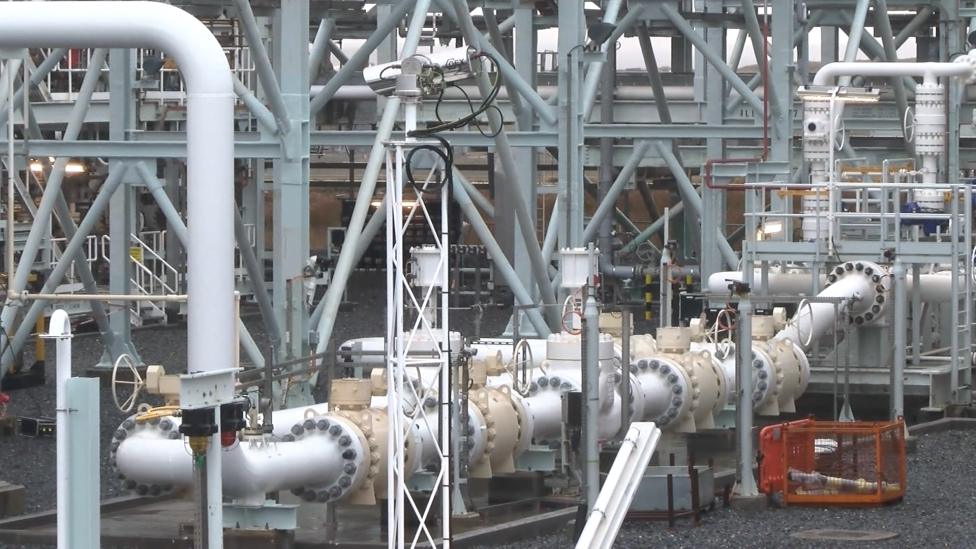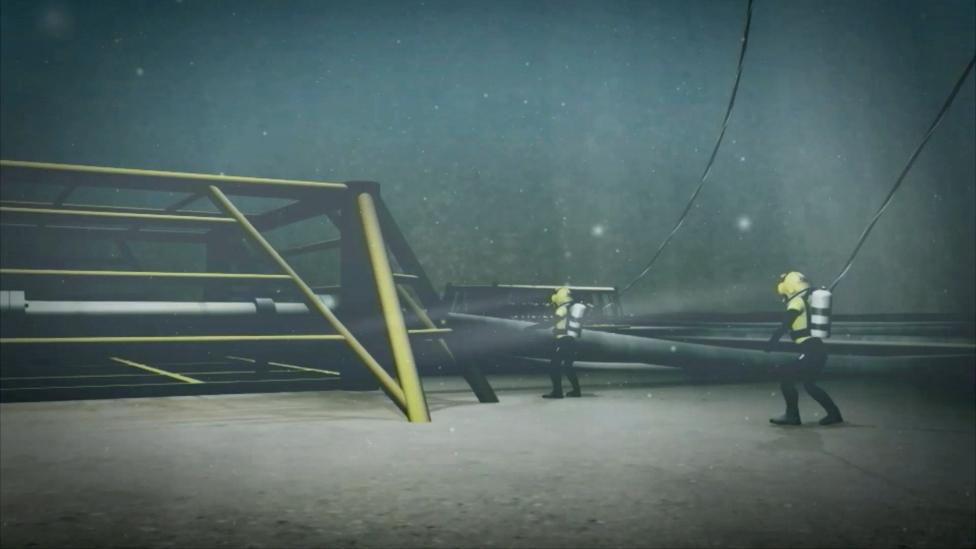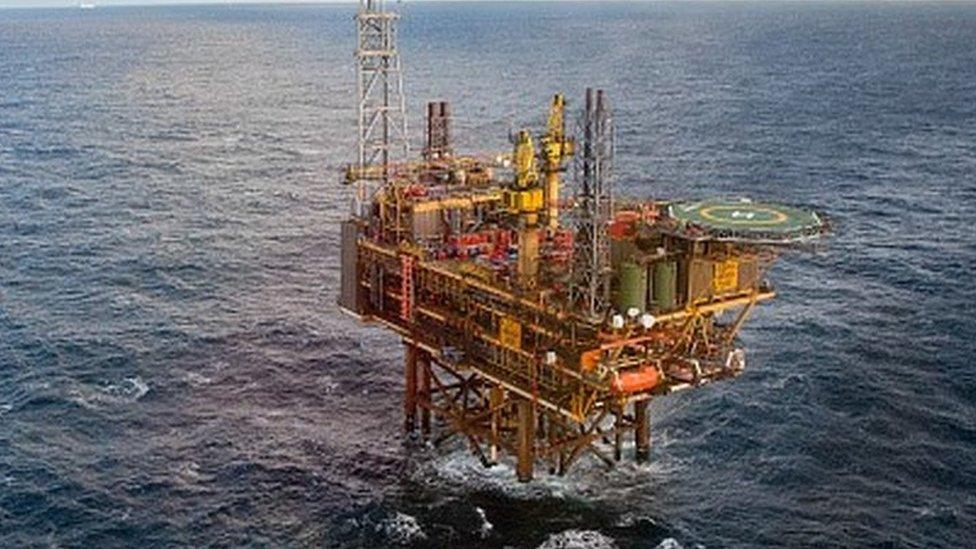Total turns on gas from west of Shetland Laggan and Tormore fields
- Published
The opening of the plant means that gas, as well as oil, can now be recovered from the area
Production has begun at a new gas plant that will bring the vast reserves west of Shetland to the mainland.
The Shetland Gas Plant is said by operator Total to be capable of supplying energy to two million homes.
A flare was lit at the moment gas started flowing to the plant, which will serve the Laggan and Tormore fields.
The two gas fields lie about 125km (77 miles) to the north west of the Shetland Islands.
The plant is said to have been the biggest construction project in the UK since the London Olympics.
Almost one fifth of the UK's remaining oil and gas reserves are thought to lie in the area to the west of Shetland.
Total said the Laggan and Tormore fields will produce 90,000 barrels of oil equivalent per day.
The gas will be piped to the plant, which lies just to the east of the existing Sullom Voe Terminal, before a pipeline takes it to the UK mainland and into the national gas grid.

It is expected to provide about 8% of the UK's gas needs - the equivalent of about two million homes.
The project is part of a massive £3.5bn investment by French company Total. Challenging weather conditions delayed the project by more than a year and added millions to its cost.
The Laggan and Tormore fields are on the edge of the UK continental shelf, where water depths descend rapidly from an average of 120m to 600m and beyond.

What are the Laggan-Tormore fields?

The fields lie in a region geographically closer to the North Atlantic than the North Sea, about 77 miles (125km) north west of Shetland
Water depths there descend rapidly from an average of 120 metres (393ft) to more than 600 metres (1,968ft).
Until today, only oil was recoverable from the area
Now, with the pipelines and infrastructure put in place, much of the energy which was previously inaccessible can be reached
The development has four subsea wells which will connect it to the new onshore Shetland Gas Plant
The plant has the capacity to handle 500 million standard cubic feet of gas each day
Following treatment at the plant, the gas will then be exported to the mainland

Arnaud Breuillac, president of exploration and production at Total, said: "The innovative subsea-to-shore development concept, the first of its kind in the United Kingdom, has no offshore surface infrastructure and benefits from both improved safety performance and lower costs.
"By opening up this new production hub in the deep offshore waters of the west of Shetland, Total is also boosting the United Kingdom's production capacity and Europe's energy security."
The Shetland Gas Plant construction phase was estimated to have involved up to 800 jobs, with 70 full time posts in plant operation.
It has been built on a peat bog next to the Sullom Voe oil terminal.

The gas plant was said to have been the largest construction project in the UK since the London Olympics
As well as the onshore construction, there was a major programme of subsea infrastructure and pipelines.
The announcement comes at a difficult time for the North Sea oil and gas industry, with industry leaders estimating that 65,000 jobs have been lost since 2014.
Scotland's Energy Minister Fergus Ewing said: "It is the success of large investment projects such as this which will see the Shetland Islands remain a key hub for oil and gas production in the North Sea
"Production from the North Sea as a whole is now increasing and cost efficiencies are being achieved. The Laggan and Tormore fields, which have a lifespan of 20 years, will provide a further boost North Sea production."
Shetland MSP Tavish Scott said Total's announcement showed that the prospects for west of Shetland looked positive despite the "doom and gloom from some about the future of oil and gas".

Analysis
By Douglas Fraser, BBC Scotland's business and economy editor

The project was delayed by the challenging weather conditions in the area
There's a second wind to Britain's oil and gas industry. And it's been in the pipeline for years.
Getting to "first gas" from the Laggan field has taken a long time. The Laggan field was discovered 30 years ago. Nearby Tormore, scheduled to come on stream later this year, was found nine years ago.
Will Total make a return on its investment at current gas prices? "We can, but it requires extremely good performance in production, and to be extremely strict on cost," says the company's UK managing director, Elisabeth Proust.
Those high costs are a big issue for investing in British waters, but she says this remains an attractive country because it has established working practices and a reliable, skilled supply chain. Plus, she says, "there is still prospectivity".
Indeed, there could still be very large oil and gas fields. But very low exploration activity recently, and even more its low success rate, mean that depleting reserves in old fields are nowhere close to being replaced.
The weather is blustery and unpredictable in these northern waters, but this second wind may be short lived.
- Published18 January 2016

- Published18 January 2016
